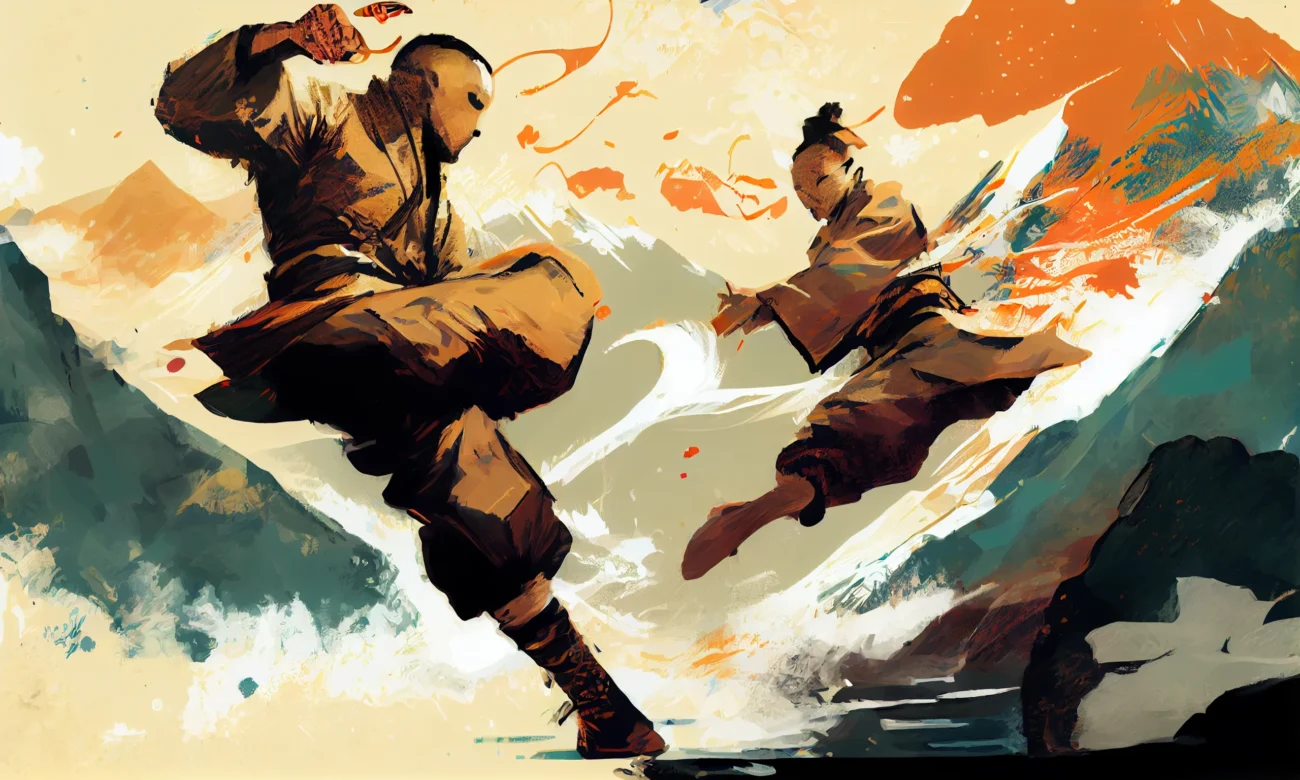There are so many Chinese martial arts, but kung fu is one of the oldest fighting styles in the world. But there are so many different forms, over 200 styles exist in the world.
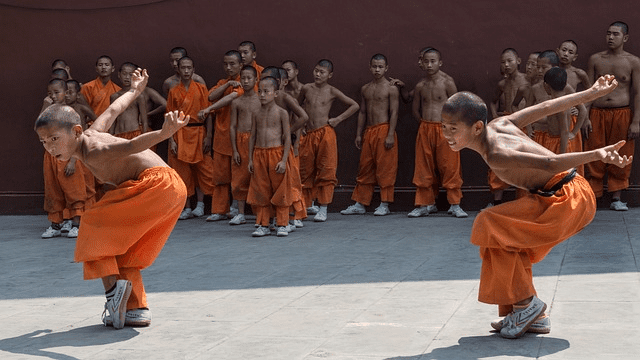
Each one is known for its unique characteristics. Some are better in hand techniques and hand strikes, while others base the whole fighting art on kicks, takedowns, and weapon combat. Kung fu has a very long history, and this article will focus on the difference between northern styles and southern styles, plus it will try to deep dive into the world of the oldest Chinese martial art.
The Different Kung Fu Styles
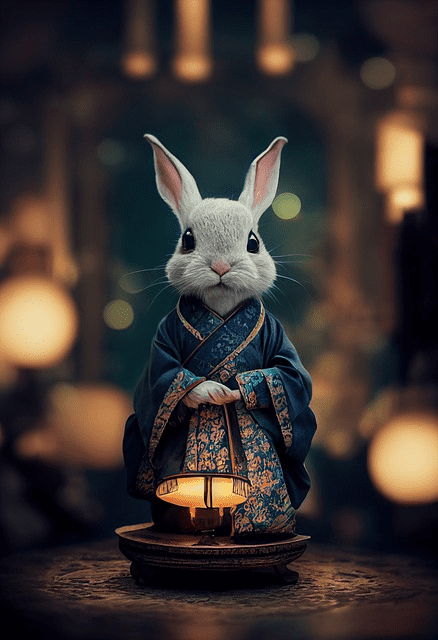
The Chinese territory offers an incredible variety of climate zones and topographies, so the geographical diversity led to tons of different styles of social and cultural expression. Kung fu is a top-notch example of this diversity, as there are tons of different Chinese martial arts styles that feature historical roots and sets of values in all areas of the most populated country of the world.
When it comes to kung fu styles, there is a consensus that a few hundred were found as of today, but the exact number of martial arts styles and kung fu practitioners is unknown at the moment.
Some kung fu style is pretty much similar to the other kung fu styles, so there is a disagreement about whether styles that only feature subtle differences might be classified as distinct.
But, as of now, several classification schemes have been developed. Geographic, religious, and philosophical aspects of the game were used to put some order in the world of kung fu styles and dojos.
The geographical classification schemes focus on whether the kung fu style was invented in the north (Northern styles) or south (Southern styles) of the Yangtze River, which is the dividing line between north and south (I know this might sound like an off example, but I hope you know what does the syntax “parallel 38” means for South Korea and North Korea, well this famous river is your border).
The different aspect of kung fu philosophy is Qi (inner energy flow) and the way it comes. If it comes internally (from your body or brain), then it falls under “the internal styles”, but when the energy flow comes from external sources (woods, trees, stones, grass…) you can put it under external styles.
And finally, the religious area. The Chinese kung fu styles are mostly affected by three religions – Buddhism, Taoism, or Confucianism.
This article is going to focus on the most often styles of ancient Chinese martial arts style. We will mainly discuss northern and southern styles, and you will also get to know the most famous Shaolin animals, interesting animal forms, and the most entertaining areas of Chinese society too! The voice of kung fu speaks through its practitioners and history – now let’s get underway!
Southern Kung Fu
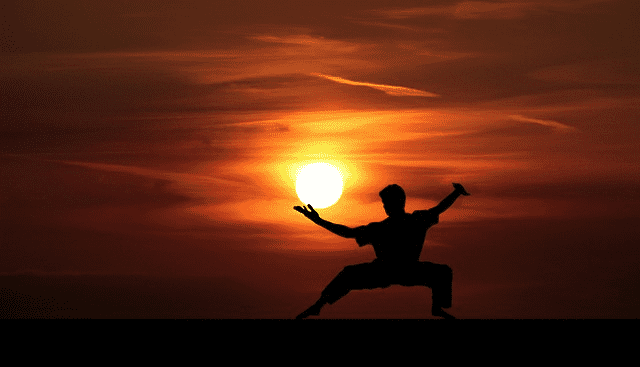
There are differences between northern and southern styles, and we’ll try to pinpoint the most eye-catching details of kung fu styles born south of the Yangtze River.
You will see a lot of short stable movements and low stable stances that combine both defense and attack. For example, if you play Tekken, Feng Wei has a lot of moves that parry the opponent’s move and deliver a nasty counter at the same time.
Southern styles came from Japanese Karate styles – Goju Ryu, Uechi Ryu, and some styles from Okinawa, plus there are similarities with the American Kenpo (guess what, Tekken character Feng Wei is a master of the martial art Kempo).
The five most famous southern styles are Choi Gar, Hung Ga, Lau Gar, Ng Ying Kung Fu, Lee Family, and Mok Gar. But there are many other popular forms too – Southern Praying Mantis, Wing Chun, Five Ancestors, Fujian White Crane, Dog Style Kung Fu, Bak Mei…
There are many sub-divisions in Southern styles, and one good example is “Fujian martial arts”. These groups like shorter stances during combats, keeping hands close to the chest, short steps, and keeping elbows low and close to the flanks for better rib protection”.
Also, Nanquan, or “The Southern fist” is a component of Wushu training. The ultimate role of Southern fists is to teach you the key elements of every single southern fighting art.
Northern Kung Fu
Northern styles are mostly based on quick footwork, high kicks, explosive movements, and fluid transitions. For example, some kicks and moves originate from Korean Taekwondo, but stances are way deeper and legs are wider apart.
Another significant trademark is deeply extended postures – for example, bow, horse, dragon, and drop postures, plus many Northern styles practitioners mostly rock in direction changes.
The most often and famous styles from the North are Northern Shaolin Kung Fu, Bajiquan, Chaquan, Baguazhang, Chuojiao, Northern Praying Mantis, Taijiquan, and Eagle Claw.
In the Wushu curriculum, northern systems fall under different forms of actual fighting, compared to styles that were created south of the Yangtze River.
For example, Northern Praying Mantis is one of the trickiest styles to deal with, as you might believe that your opponent is drunk or insane due to tricky moves, especially when you see him in the street. But never judge the book by its cover, you might get your a** whooped in less than five seconds!
There are other classification schemes too, but we will focus on north and south, as it is easier to recognize the moves for a casual fan of Chinese martial arts.
Shaolin Kung Fu
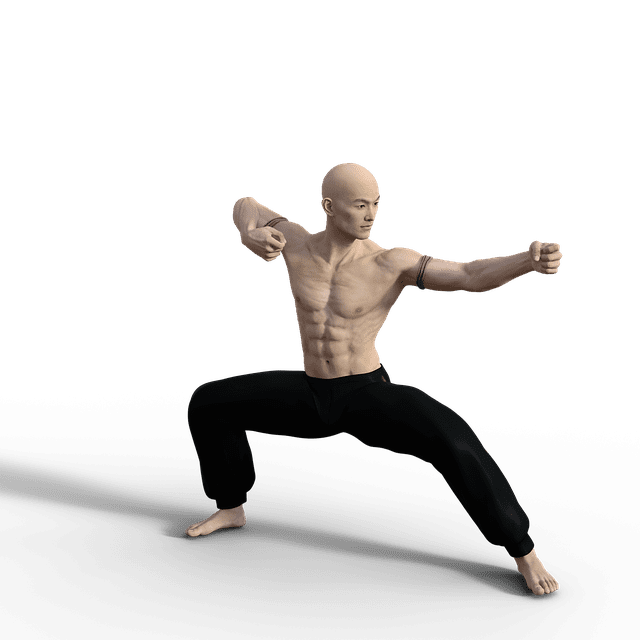
Shaolin kung fu is one of the oldest forms of ancient Chinese martial arts, as its roots can be found deep in the past. This Chinese martial art was found around 1500 years ago in the Shaolin monastery. Nowadays, Shaolin kung fu is one of the most popular Chinese martial arts styles, which is very much connected to Zen Buddhism and Chen teachings too.
Unfortunately, many people first think of Shaolin kung fu when they hear about the syntax of kung fu, but it is just one kung fu style, you cannot connect the creation from the ancient Shaolin temple for every single style of fighting. Shaolin monks wear special clothing that shows their background in martial arts, philosophy, and tradition.
You can hear the most about this set of Chinese martial arts from wandering Shaolin monks, but there are also many Shaolin temples all over the state. It is recognized by wide stances, tons of tricky-to-learn striking techniques, and even weapon combat and acrobatics. Throughout Chinese history, this external version of kung fu has always been one of the hardest styles to learn.
There are more than a thousand forms of Shaolin, plus there are many sub styles. We will try to answer whether this is a northern style or a southern style. But I guarantee you that the majority of Buddhist monks are trained in Shaolin, no doubt about it, they very rarely belong to the other styles of combat!
Is Shaolin Kung Fu Northern Or Southern?
This is a very hard question to answer, as Shaolin kung fu combines very low stances with extremely explosive movements, quick transitions, and attacks, plus there are many variations where you block a strike and land a shot at the same time.
Some forms of Shaolin even teach you joint locks and some other aspects of survival, making you eat specific food and sleep a specific number of hours, especially if you pursue living in a Shaolin temple. But where did this form come from?
It is a hybrid between the northern and southern styles. Take a closer look and you’ll see the elements of both – northern kicks and southern low stances. The term “Shaolin” is used for those styles who originate from the Shaolin monastery in Henan province (north of the Yangtze River, northern China), wandering Shaolin monks, or even the Southern Shaolin Temple in Fujian province (south of the famous river).
The most strict definition of Shaolin kung fu could refer to the styles created only on temple grounds, while the broadest one accepts all external styles of Chinese martial arts, where this name has a lot to do with Shaolin as a brand name.
For example, Shaolin soldier monks appeared during the era of the Sui and Tang dynasties (581-907 AD), but there is no written evidence that monks participated in the combats from the 8th to the 15th century.
Yet, the Ming dynasty period can be considered the golden era of Shaolin, because not only Shaolin monks started participating in combats, but martial arts became an important part of Shaolin monastery life. By the mid-16th century, many people were traveling to Shaolin monasteries to learn fighting skills and techniques, as monks were masters in both hand-to-hand and weapon combat.
There was a lot of lawlessness in Henan and surrounding provinces during the later stages of the Ming dynasty. The Qing dynasty also contributed to the creation of martial arts in Chinese culture, as martial artists were having the greatest chances of survival. Also, the style called Tai Chi Chuan appeared between the 16th and 17th centuries.
If you take a look at the modern combats between Shaolin kung fu monks and other martial arts, you will notice a mixture of northern kicks and very atypical stances, a combination of southern fists, Wing Chun style, and many other elements from southern China.
There are tons of videos of Shaolin kung fu on YouTube, but please take a look at those skills from this legendary Shaolin expert against a Taekwondo master. Those kicks are just out of this world, he is probably heavily influenced by northern styles.
What Are The 7 Styles Of Shaolin?
There are so many Shaolin kung fu styles, but we will try to focus on the most often ones, seen in the movies and known all around the globe. But theoretically, there are all kinds of animals in kung fu studies, from Golden Snake to Tiger Claw. You can’t say there is one and only style in the world, this would be wrong.
By far the most popular is Wing Chun, which gained huge attention thanks to Ip Man, who trained Bruce Lee. It is also believed that Shaolin is by far the most efficient fighting style, as it combines both north and south heritage.
Drunken style is also very popular, and fighters behave like they are drunk, and instantly transition from offense to defense and vice versa. It is one of the trickiest styles to deal with. If you play Sleeping Dogs on Play Station, please take a look at Wei Shen.
Arhat’s 18 hands are known as the oldest style, and it’s way different than, for example, Wing Chun. Arhat style is famous as the most representative style. Explosive style, or the king of styles, reminds a lot of Taekwondo and other Korean martial arts, as there are tons of quick moves and transitions, plus the stance is narrower. The Plum Blossom style is also one of the very popular martial arts in China.
Bruce Lee also invented Jeet Kune Do, which is one of the newest Chinese martial arts, focused on controlling the central line, which took kicks from Taekwondo and mixed it up with Wing Chun punches and moves.
The Five Animals Of The Chinese Martial Arts
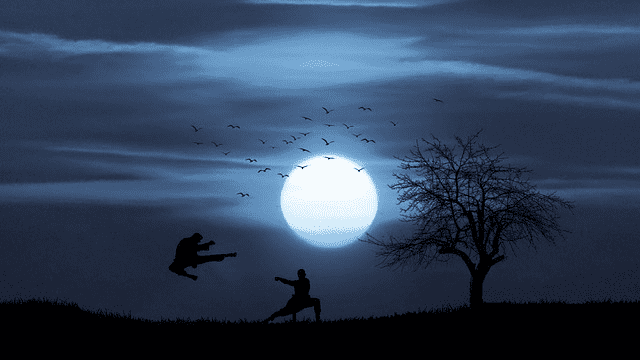
Let me give you one suggestion. Are you interested in all five animal forms in one spot? Please take a look at Lei Wulong in Tekken, this is the best video game creation of the five basic animal forms you’ll ever see.
Ok, enough video game talk, let’s focus on the important elements of Chinese culture and external styles. There are many different animal forms of kung fu, but the combination of the basic five Shaolin animals includes The Dragon, The Snake, The Tiger, The Leopard, and The Crane.
Some would say that every animal variation is a kung fu style, which is correct to some point. For example, The Dragon uses a lot of spinning heel strikes, “wiping his tail” and controlling the distance with long kicks and tricky explosive moves. This martial art reminds me a lot of northern styles and it is a pretty unorthodox style of Chinese kung fu. Some even believe it is influenced by northern martial arts too.
There are similarities between The Tiger and The Leopard because both styles prefer using “claws”. What does that mean? Well, the majority of Chinese philosophy incorporated in those 2 styles is based on copycatting the animal’s moves, so many masters of these two martial arts are super-dangerous without gloves, as they strengthen fingers and threaten with many jumping attacks. The hand and finger position is pretty much typical for those 2 animal patterns.
The Dragon
I’d call The Dragon one of the trickiest Chinese martial arts to master, as you have to turn your back a lot, which is very risky, especially when somebody knows to drag the combat to the canvas. For example, there are tons of spinning back kicks or even spinning back fists and all kinds of various punches when your back is turned towards your foe.
Turning back and moving sideways can be beneficial against a beginner, but I am unsure how it’d work against a fighter trained in mixed martial arts. The takedown vulnerability is just too big. Yet, when The Dragon slams you with his tail, it might lead to one of the most spectacular knockouts in the world of Chinese martial arts.
The Snake
The Snake master lays on the ground very often and circles the opponent like a natural, plus the strikes are always extremely explosive and tricky to defend against.
Snake is one of the Chinese martial arts forms where your goal is to confuse the opponent and choke him out. For example, the popular anaconda choke in MMA originates from Chinese martial arts, as it simulates the boa choking her helpless prey (you can defend it by rolling to the opposite side of “your snake”).
The Tiger
Have you ever heard of claw combat? Well, I hope you watched Nightmare In Elm Street, where Freddy Krueger claws his way through scared victims. The Tiger is one of the martial arts that can’t be used inside the Octagon as you’d break tons of rules, but you can defeat someone in the street easily.
Claws are illegal in almost any combat and don’t work when you wear gloves. But finger strikes and claw attacks are the trickiest to defend in the world of martial arts because you can’t parry normally – when you block, The Tiger specialist grabs you and vice versa. This works in street combat! I have only two words for you – me-ow! 🙂
The Leopard
The Leopard also uses claws but fists are equally important, so this one could work inside the Octagon with few modifications. It is one of the most confusing martial arts to defend against. The Leopard uses more straight-line, explosive attacks and angle changes, which is pretty hard to anticipate and counter. The video above shows you some interesting motions.
The Crane
The Crane is one of the trickiest martial arts to learn, as you don’t hold guard at all, plus you’re standing on one leg, this is your basic position. Superman punch is, for example, so hard to perform and easy to counter, but Crane specialists are experts in controlling the central line.
History of Kung Fu And The Shaolin Five Animals
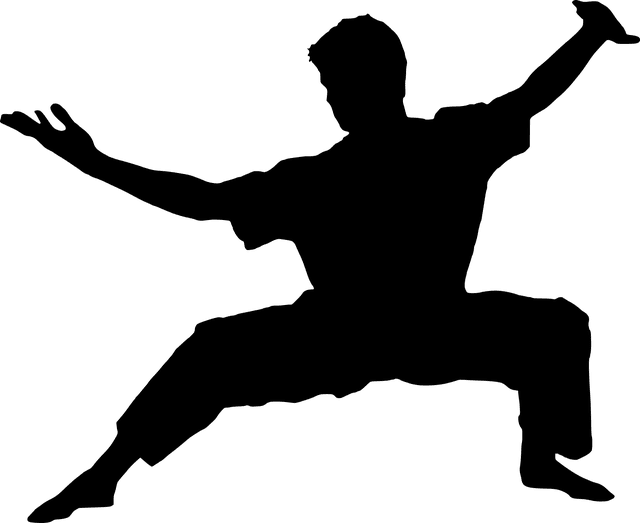
The critical period for the explosion of kung fu styles was the Manchu invasion of China in 1644, when Ching Dynasty was established too. Unfortunately, many temples were turned to dust, including Shaolin, so monks were forced to leave them and flee to other regions of China.
Yet, they never quit teaching, revising, and modifying their forms of fighting, which led to creation of different Chinese martial arts systems. Yet, each monk created his specialty, which led to so many different styles.
The geographical separation also led to the different preferences of techniques which were chosen according to the teacher’s abilities, physical environment, and needs. Various fighting forms started spreading throughout the world into the martial arts forms that exist today.
The later styles promoted a specific brand or a person who created it, so you have, for example, Jet Li and Jackie Chan kung fu, despite these variations of different styles. But the Western world is all about marketing and celebrities, the era has changed, and digital media lets you see and get to know everything.
This is not incorrect, and it was also present in ancient China (of course, less, as there was no internet and digital community). A good example is the Hung style, which was named by the master Hung, and had many variations and sub-styles (Hung Gar kung fu, Hung Kuen, Hung Fut, Wong Fei Hung…).
The Shaolin five animals originate from the area south of the Yangtze River, despite some of them are nowadays heavily influenced by the north, and you can briefly describe their techniques like this (please read the previous H2 for more details):
- The Dragon – this style cultivates graceful movements, flexibility, and spirit, as the dragon is a symbol of energy and courage. The drills represent the animal’s flowing spirit.
- The Tiger – the object of this style is to strengthen your bones and to use the claw to destroy your opponent;
- The Crane – strengthening sinews, promoting vitality – there are a lot of balance and fast foot movements, plus stances and guard are pretty much unorthodox.
- The Leopard – focuses on power, speed, and strength; low stances require muscle activation and a lot of concentration.
- The Snake – Cultivating Chi, focusing on internal power and attacking vulnerable areas, is one of the most dangerous internal styles.
What Is The Best Fighting Style In Kung Fu?

Well, this question is hard to answer, but I will have to put you into tricky situations. Every style of Chinese martial arts offers good and bad sides. While some styles rock when it comes to distance fighting, others are going to save you in hand-to-hand close-range combat. Now I will try to analyze as many situations as I can:
- Northern styles are excellent for long-range combat, while you’ll notice the massive advantage of southern fists and southern styles in a close-range battle.
- Shaolin kung fu works well when your opponent is trying to take you down, but it can also work well against someone with a great feel for distance, so it is somewhere in between.
- Lau Gar rocks for long-range combat, but it offers very little head defense – watch Michael “Venom” Page in Bellator and you’ll see what am I talking about – https://www.youtube.com/watch?v=OCv23X0H9jo;
- Wing Chun is a fabulous weapon for close-range combat, you will see some of the fastest punches and hand strikes from another dimension, but as soon as you put the gloves on, the majority of strikes will become useless;
- The drunken fist is very good for street combat because your opponent will not get you seriously – quick deceptive strikes can teach him a lesson, you don’t have to train in a Shaolin temple to counter the street thug;
- The Snake is also a very deceptive way to go for your enemy, but you’d be pretty much vulnerable and helpless if you don’t get up as soon as you go down;
- Unless you train Shaolin kung fu or mix it up with some martial arts that teach you to fight on the ground, you’d have a hard time as soon as somebody takes you down – the majority of kung fu styles will not work in an MMA fight;
- Tai Chi can’t work against somebody who knows to strike or throw, but Wing Chun style is dangerous against bigger guys as it rocks even the biggest guys thanks to the enormous amount of quick punches to the same spot;
- Modify internal components and you might become successful in other martial arts – for example, learn the ground game and you can destroy top-tier fighters with Wing Chun;
- Chinese martial arts are generally vulnerable on the ground, but their greatest advantage is the different approach – nobody expects you to parry the strike and land one at the same time, it will be a massive surprise for a bully.
